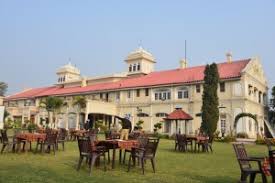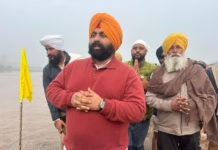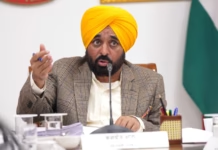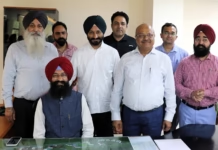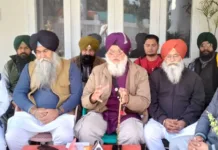“Prosperous India” not possible without a “Prosperous Pb”-15th Fin Commission
KS Diwan/ royalpatiala.in/ Chandigarh
The 15th Finance Commission headed by N.K. Singh today had a detailed meeting with the State Government Punjab headed by the Chief Minister of Punjab Captain Amrinder Singh. The meeting was also addressed by the State Finance Minister Manpreet Singh Badal.
The Commission was informed that:
- Punjab constitutes 1.53% of total area of the country
- The State has 2.33% of the total population of the country with an urbanisation rate of 37.48%.
- Sex ratio of the State is 895 as per Census 2011 as compared to 943 at All India level.
- Population density of Punjab is very high as against the national average and has grown consistently since 1951, though at a slower pace than the latter. Population density of the State is 551 as compared to the national average of 382.
- Though comprising of 2.33% of total population of the country, the state’s share in inter-se devolution was 1.577.
- States contribution to National GDP has been around 2.8-3.1% in the past 5 years (2011-12 to 2016-17)
- Share of Primary, Secondary and Tertiary sector is 29.2, 24.6 and 46.2% in 2016-17.
- Per capita Income of Rs. 128890 (Rank 13th) in 2016-17 as compared to India’s average of Rs. 103870.

The Commission was also informed that:
- Punjab is the first State to achieve 100% rural electrification, 100% rural connectivity through all-weather roads, mandi linkages of rural areas and now 24X7 rural water supply.
- The state has one of the lowest Transmission & Distribution Losses (T&D) in the country 13.6% in 2017-18 down from 16.95% in 2013-14.
- State has 100% road connectivity and with a road density of 133 per square kilometer, the State is ranked 2nd in the country.
- The State has made significant development in reducing the poverty, thereby showing its commitment towards SDG 1. The state has a poverty ratio of 8.3 in 2011-12 declining from 20.9 in 2004-05 (Population below Poverty Line Tendulkar Methodology.
- The memorandum submitted by the State has given a balanced picture of both equity and efficiency indicators. The State has proposed various indicators for performance measurement like in the areas of renewable energy, efficiency in Public Finance Management through IT initiative, Sewerage System in villages, efficient water resource management and solar powered street lights.
- The State ranks 2nd as per the Health Index 2018, prepared by the NITI Aayog in collaboration with the Ministry of Health and Family Welfare &the World Bank.
The Commission was concerned to note about the State’s Rising Outstanding Debt to GSDP Ratio, Declining Tax Revenues, Challenges for the State Finances, Debt Trap Situation, Agriculture Distress & Groundwater Depletion and other issues.

- The projections submitted by the state government to XV FC also indicates that the State is projecting its own tax revenues to grow at a mere trend growth rate of 4.13% during 2020-25.
- As state’s own resources contributes is a significant contributor (around 70%) to the total revenue receipts of the State, this trend is disturbing and would not augur well for the state’s fiscal health.
- The implementation of the Pay Commission is expected to lead to significant growth in expenditure on Salaries & Wages and put additional burden on the already strained financial resources of the State, constraining its fiscal space further.
- Committed expenditure comprising Salary, Interest payment, Pension and Subsidies constitutes more than 90% of the Total Revenue Receipts of the State.
- Punjab Interest Payments/Total Revenue Receipts in 2016-17 is 24.30%, which is highest among general category states.
- State is in a situation where its gross borrowings are not even enough to meet its expenditure on repayment of principal and interest payment, leaving little scope for the State to spend on developmental works.
- As per UDAY improvement barometer (June 2018), the State has achieved 100 % progress in Rural Feeder Audit. However, the state’s performance is not satisfactory and is way below the targets for parameters like Rural Feeder Audit, DT Metering Urban and DT Metering Rural. Health Outcomes.



